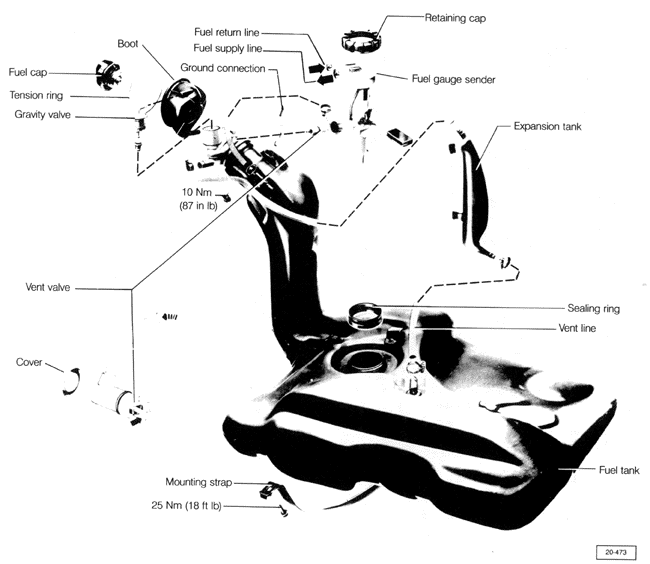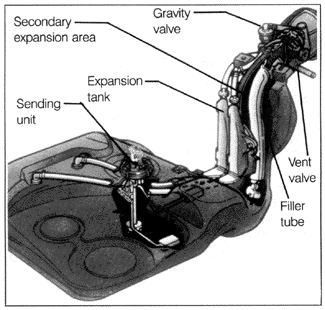4.1 Fuel Tank Vents

There are two fuel tank vents, shown earlier in Fig. 4-1. Both vents are accessible by reaching up inside the rear fender on the fuel cap side. The gravity valve is the main tank vent. It is normally open, but automatically closes when tilted more than 45°-such as in an accident-to prevent fuel spillage. The gravity valve is removed by unclipping it and pulling it straight up from its mounting. The vent valve is removed by first unscrewing its cover, and then pulling it straight out. You should be able to blow through the gravity valve when it is held vertically, but not when it is tilted past 45°. The vent valve is operated by the insertion and removal of the fuel cap: inserting the cap opens the valve, removing it closes the valve. The vent valve controls the pressure in the expansion tank and the secondary expansion area around the filler tube. See Fig. 4-3. When the tank is being filled, the valve is closed, preventing fuel from entering the expansion tank or the secondary expansion area. When the vent valve is open, it allows the expansion of fuel into the expansion tank, and the venting of pressure through the gravity valve. You should be able to blow through the vent valve tube when the spring-loaded lever is pushed in (arrow, Fig. 4-1 above), but not when the lever is released.

A two-way pressure relief valve in the fuel cap prevents pressure build-up in the tank in the event of a failure of the normal tank ventilation. While vent problems are rare, failure of either vent could allow filling of the fuel tank to dangerous levels. |